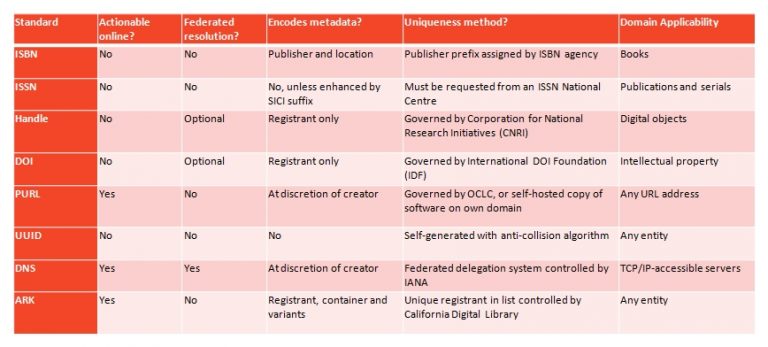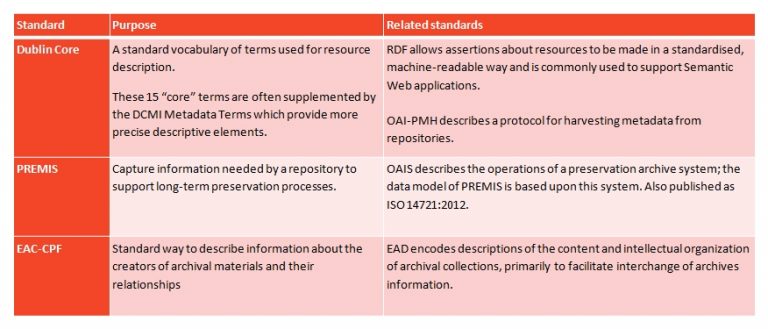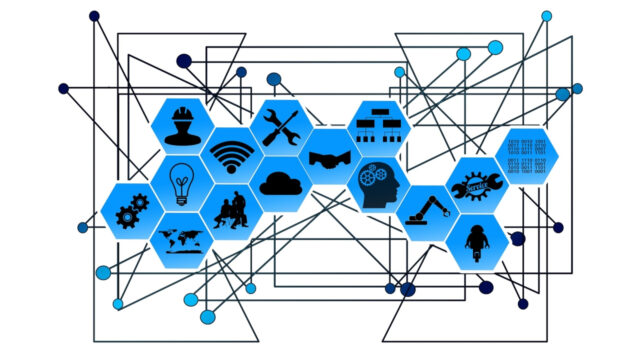
Digital preservation: will the next generation thank you? [RealKM Connect introductory series]
This is the final part (part 9) of a series of articles presenting key points from Stephen Bounds’ presentation1 to a RealKM Connect introductory seminar in November 20162.
Effective digital preservation programs have four key components:
- Identification: persistent, unique and actionable identifiers
- Discoverability: indexing and cataloguing for browse and search
- Preservation regime: ongoing integrity, authenticity, and accessibility
- Decision support: supporting evaluations about relevancy and currency
Identification includes a large number of standards from ISBN, ISSN, DOI, and as defined in Figure 1.

Each has a different set of traits, so when setting up a preservation environment you need to decide which one you will use, and also how to manage that standard so you can track relationships, for instance who worked on what and when.
PREMIS is an important structured metadata standard because it ensures preservation in the long term by ensuring the correct preservation regime is in place so formats have a program that can open them. Dublin Core is also set around the structure of data and facilitating operable search and software packages.

Decision support has three key aspects to it:
- Permanence. Is the content always going to be accessible or just for a fixed period of time? Will the content change, and if so why? This is particularly relevant to website content where information is reorganised and links no longer work.
- Accuracy. Has the content been assessed for its ongoing accuracy, and how long will this assessment remain valid? You would ask questions like; can anyone publish content? Are you validating what is getting preserved? Is the content only valid for a particular period of time, and if so are people clear about that? These are the kinds of accuracy standards you may decide to enforce.
- Applicability. Who needs to access and use this information? If there is a large amount of content to preserve, it may be relevant to segment that content so users only see what’s most relevant to them, otherwise there is the risk of information overload.
The critical questions for any digital preservation project revolve around preservation value – can you keep the content, or must you keep it? Record keeping is most often a must keep and there are legislative mandates to do so. There are also the can keeps which may be mandated and decided internally. The other question to ask is why is the information valuable? The value might also be in its relational contexts – to who it was sent and when?
Notes:
- Stephen Bounds is the Director and Principal Consultant at KnowQuestion, publisher of RealKM Magazine. ↩
- For a copy of the transcript please contact Amanda Surrey. ↩





